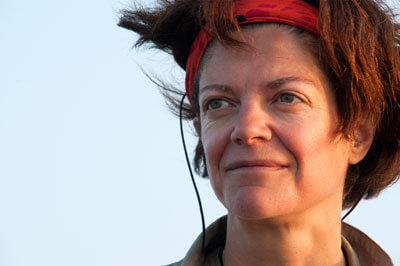- Testify to the variety of cultures on our planet.
Education: Interior architect. I travelled on all continents, camera in hand, to testify of the diversity of countries on our planet. Over the years I have experienced different cultures, landscapes, encounters … The cultures of the entire world are in constant evolution. My work is to serve the memory of the people and their countries all around the world.
- Creation of photo montage : imagine a universe of possibilities, elaborate the encounter of the unlikely.
Mixing elements, transforming scale relations, rejecting logical constructions... Today I give a new life to the thousands of negatives taken, recreating imaginary worlds where poetry, dreams and surrealism alternate.
- Permanent exhibition : Marseille : galerie Massalia; Vaison la Romaine, in the old town : atelier ANSATU & MAILO
All about Marie Laure Vareilles:AAP: When did you realize you wanted to be a photographer?It was not my dream.
AAP:Do you have a mentor?I remember about the first exhibition I have visited : it was Salgado with beautiful works in black and white. The subject he had worked on was men working by hand, all over the world... Beautiful.
AAP: How long have you been a photographer?I took my first photo in 1985, while traveling in Turquey. It was my first trip alone abroad and I wanted to share my impresion with my family. Taking photos seemed to be the best medium for sharing places I had visited, people I had met.
AAP: What or who inspires you? Since I am travelling and taking photos, I have realised how fast our world is changing. Faster and faster. Shooting is a way to keep testimony from a time which doesn’t exist any more : the more I travel, the more I realise that our differences are less and less visible.
AAP: How could you describe your style?I shoot what I see, very quickly. But as soon as light is changing I shoot again ! Landscape, architecture, sky, people... many subjects can be interesting for the montages I create when I come back in my studio.
AAP: What kind of gear do you use? Camera, lens, digital, film?Since the begining, I am working with Nikon cameras. During the last few years, I have definitly adopted digital camera. My last one is the D-800.
AAP: Do you spend a lot of time editing your images?Not enough : after shooting, I spend a lot of time creating montages. For this reason I keep each photo, just in case ! But it might be a problem in the futur with hardware !
AAP: Favorite(s) photographer(s)?They are so many. Editing a list would be a nightmare. Especially if I forgot to mention some of them.
AAP: Your best memory has a photographer?I will never forget my experience in Bangladesh. I had never seen so many people working by hand, what ever they do, transport, create, make… they do not use use any machine. They work hard in bad conditions but they keep smiling!
AAP: Your worst souvenir has a photographer?I had a bad time in Guinea. Working for an editor who wanted me to take photos from the Niger river and the every day life. The problem is I had to deal with blackmail from the people who were supposed to help me.
